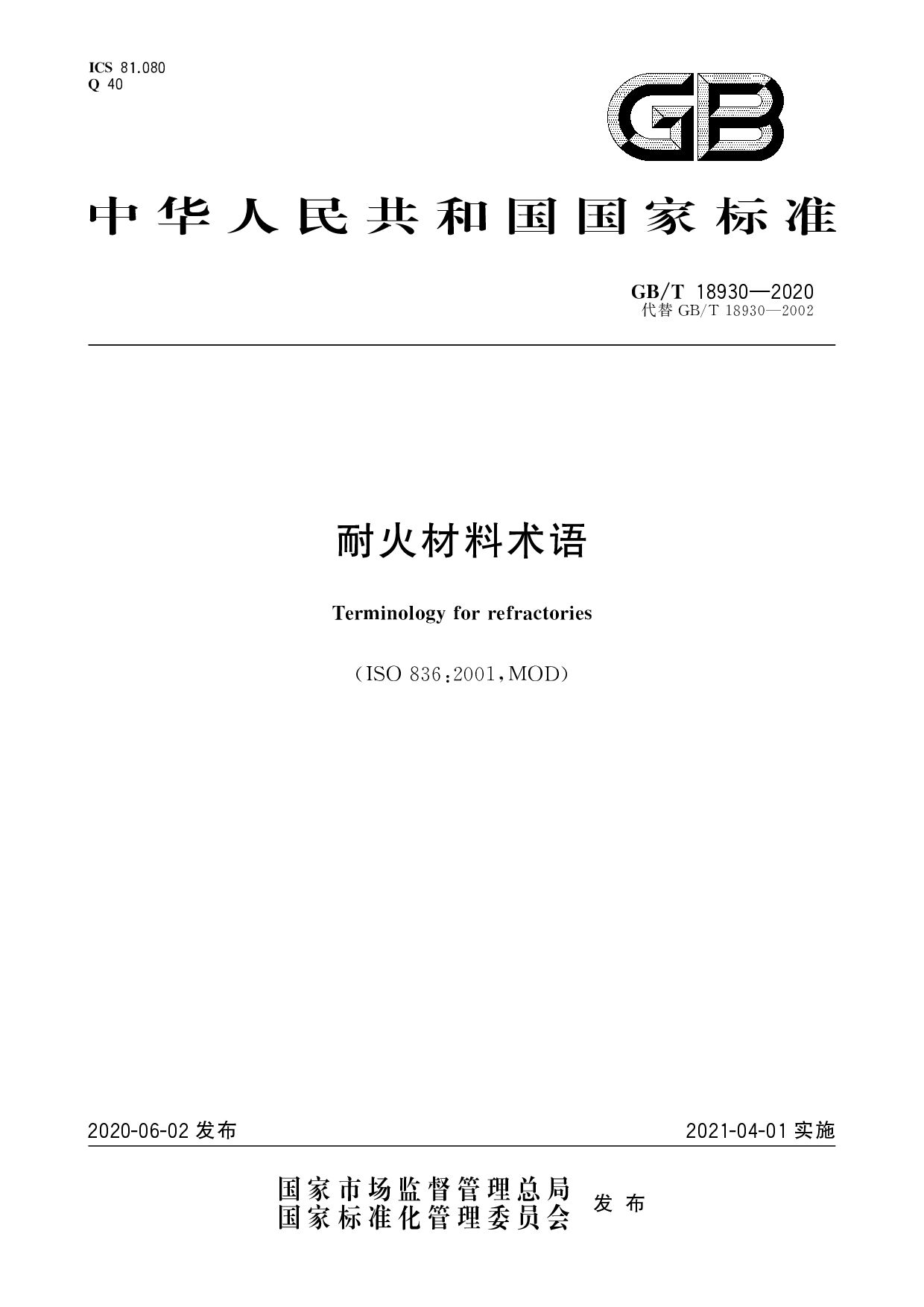GB/T 18930-2020
Terminology for refractories (English Version)

- Standard No.
- GB/T 18930-2020
- Language
- Chinese, Available in English version
- Release Date
- 2020
- Published By
- General Administration of Quality Supervision, Inspection and Quarantine of the People‘s Republic of China
- Latest
- GB/T 18930-2020
- Replace
- GB/T 18930-2002
- Scope
- This standard defines the terms and definitions related to refractory raw materials, products, processes, construction, performance and equipment. This standard applies to refractory materials and related industries. 2 Terms and Definitions
- Introduction
Background of Standard Revision and Technological Evolution
GB/T18930-2020, as the basic terminology standard in the field of refractory materials, has achieved a 104% increase in terminology compared to the 2002 version (142→290 items), adopts the ISO836:2001 international standard framework and completes localization adaptation. The main technological changes are reflected in:
Dimensions 2002 Edition 2020 Edition Technical Differences Terminology Single Chapter 6 major technical classifications New classifications such as raw materials/equipment Performance indicators Basic performance 157 new items Added high-temperature dynamic test methods Product categories Traditional products 21 categories updated Supplement of new materials such as carbon composites
Classification and Analysis of Core Terms
2.1 Raw Material Terms
For the first time, the standard clearly defines 23 raw materials such as periclite sand (MgO≥85%) and dense silica, among which:
- Double-screen/single-screen refractory raw materials: clarify the difference in particle size control process
- Waste rock classification: refine the definition of impurities such as coal gangue and melt nodules
2.2 Product Terms
92 new product definitions such as ladle air bricks and polycrystalline fibers, with key technical features:
Case: Refractory ceramic fiber products
The standard subdivides into 8 forms such as blankets/boards/felts, clarifies the biosolubility requirements of alkaline earth silicate fibers (AEF), and guides the selection of high-temperature thermal insulation.
Implementation and application suggestions
- Selection and matching: Select materials according to the standard 2.5.32 refractoriness and 2.5.33 load softening temperature indicators
- Construction control: Refer to 2.4.8 wet masonry/2.4.9 dry masonry process definition standard operation
- Quality inspection: Use 2.5.67 bursting resistance temperature and other new test methods to evaluate material stability
GB/T 18930-2020 history
- 2020 GB/T 18930-2020 Terminology for refractories
- 2002 GB/T 18930-2002 Terminology for refractories